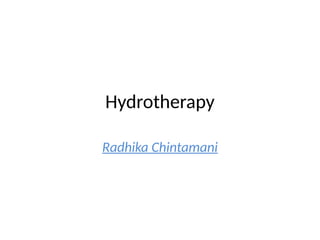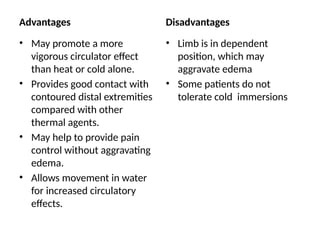Hydrotherapy, the treatment of physical or psychological dysfunction using water, dates back to the Romans and is characterized by its various application techniques, such as whirlpools and contrast baths. The physical properties of water, including buoyancy, resistance, and hydrostatic pressure, play a crucial role in its physiological effects on the body, aiding in pain reduction, wound care, and improving musculoskeletal and cardiovascular functions. Key uses and contraindications of hydrotherapy are outlined, emphasizing its benefits for specific conditions while also noting precautions to ensure patient safety.











































